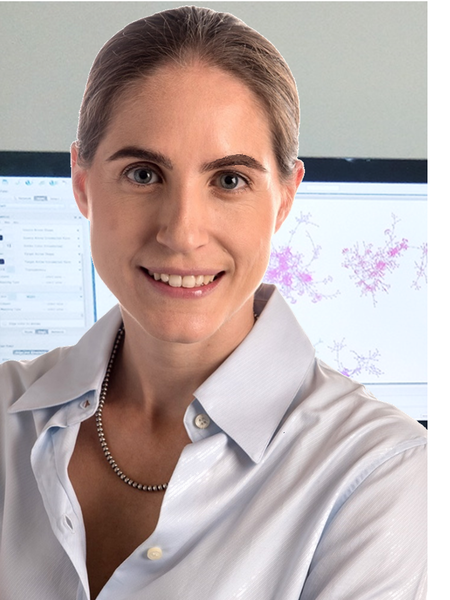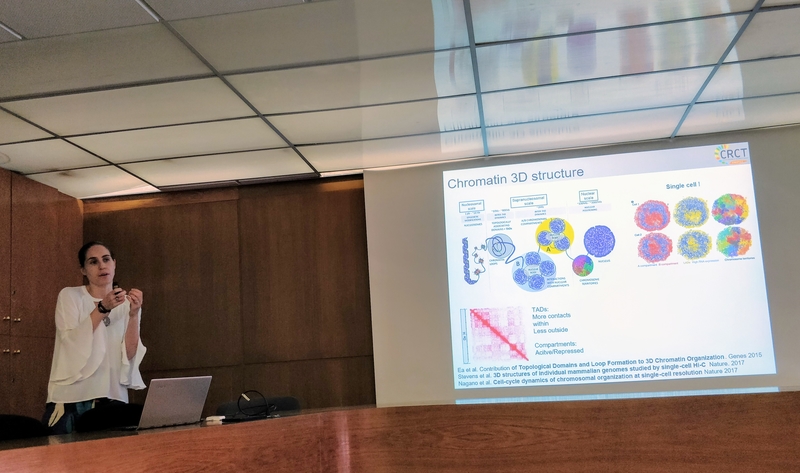Objectives
To download the presentation, please click here
Abstract: Recent technological advances have allowed us to map chromatin conformation and uncover the spatial organization of the genome inside the nucleus. These experiments have revealed the complexities of genome folding, characterized by the presence of loops and domains at different scales which can change across development and cell types.
Different types of approaches have been employed to describe 3D genome organization, which can be broadly divided into polymer physics models, constraint based models and statistical approaches.
An increasingly popular representation of chromatin is given by networks, in which genomic fragments are the nodes and connections represent experimentally observed spatial proximity of two genomically distant regions. This formalism, applied to promoter centred chromatin interaction networks generated by promoter capture HiC, has allowed us to consider a variety of chromatin features in association with the 3D structure, leading to novel biological insight on gene regulation (Pancaldi et al. Genome Biology 2016).
We thus propose network representation as the tool to bridge the different scales of chromatin organization and have developed an online chromatin network interaction viewer and an R package building on this framework.
In the present work, we characterize DNA replication in a 3D chromatin context, generating novel maps of replication origins in mouse embryonic stem cells under normal conditions and during DNA replication stress. These origins are then contextualized by projection on a promoter-centred chromatin contact network defined at a few kb resolution. We find that replication origins with similar efficiency interact with each other preferentially, suggesting that DNA replication takes place in the context of hierarchical multi-scale structures spanning tens of megabases and even bridging chromosomes. More specifically, origins that interact with others tend to replicate earlier and with higher efficiency. The changes of origin activation patterns in normal and stressed conditions support a stochastic model of activation in which both local and global chromatin properties modulate efficiency.
 Short bio: Since September 2018 Vera Pancaldi is leading a computational biology lab at CRCT. She have been senior researcher in the Life Science department of the Barcelona Supercomputing Centre and she was previously a FEBS fellow in the Structural Biology and Biocomputing group at the CNIO (Spanish National Cancer Research Centre) in Madrid, Spain from 2012 to 2017. Before that she has held post-doctoral research positions at Cambridge University working on epigenetics and hybrid vigour in plants, and at the Sanger Institute and University College London working on fission yeast functional genomics. She holds a degree in Physics and PhD in engineering from Imperial College London.
Short bio: Since September 2018 Vera Pancaldi is leading a computational biology lab at CRCT. She have been senior researcher in the Life Science department of the Barcelona Supercomputing Centre and she was previously a FEBS fellow in the Structural Biology and Biocomputing group at the CNIO (Spanish National Cancer Research Centre) in Madrid, Spain from 2012 to 2017. Before that she has held post-doctoral research positions at Cambridge University working on epigenetics and hybrid vigour in plants, and at the Sanger Institute and University College London working on fission yeast functional genomics. She holds a degree in Physics and PhD in engineering from Imperial College London.

